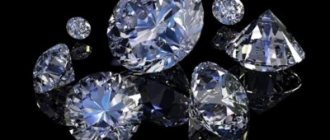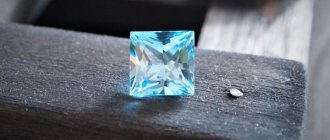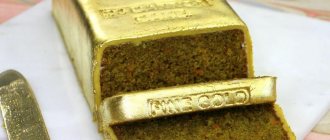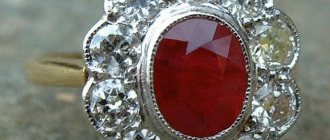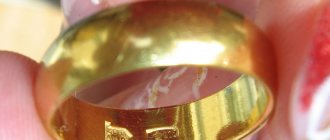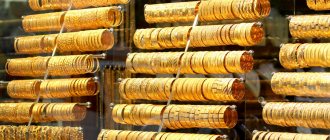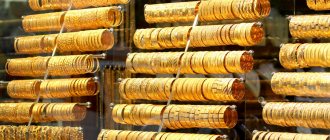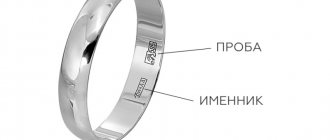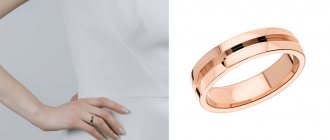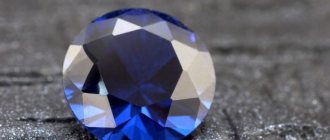Since ancient times, precious stones have attracted people's attention with their qualities: beautiful bright colors, hardness and durability, brilliance and play of light. The price of each piece depends on its size, jewelry characteristics and cut quality. Some imitations are of such high quality that it is very difficult to independently determine whether the gemstone you like is real or not. However, there are techniques by following which you can identify a fake. The methods are based primarily on knowledge of the unique properties of gems.
How to choose a mineral?
Artificial stones are:
- synthetic;
- ennobled;
- imitation.
Only in the laboratory can one distinguish a synthetic crystal from a natural one. The composition and structure of the minerals are identical. The basic physical properties of analogues are close to natural ones.
Magnificent Diamond
Gemologists also identify refined crystals that undergo the following processing:
- staining;
- waxing/oiling;
- coating;
- heating;
- filling;
- irradiation;
- bleaching.
These data must be indicated in the certificate that comes with the stone. In some stores, information is not conveyed to the client. The buyer can purchase a refined ruby, the cost of which is $5 ct, at the price of a natural one - $10,000 ct. The consumer can go to court, and such a transaction is regarded as fraud.
The Jewelry Confederation has developed a document for trade organizations. According to the prescription, special terminology accepted throughout the world should be used . How do you know if a stone is a gem or not? This information can be obtained from the certificate.
It is recommended to indicate codes in expert reports and labels. There are international designations for the refinement of stones by the LMHC and AGTA committees. Leading laboratories follow LMHC guidelines.
In the civilized world, precious minerals are sold only with a certificate. To confirm the document, you can contact the laboratory.
The most prestigious logo on jewelry is Gübelin. The Swiss brand produces jewelry of the highest quality.
Jewelry stores issue a certificate for each stone. The document states:
- size;
- weight;
- color;
- proportions;
- purity;
- defects;
- cutting method;
- mining site.
The stores assure the buyer that all products are checked for compliance. How to determine whether a stone is real or not when standing in front of a display case? All grown minerals are ideal.
Gold ring with yacht
Color and shade
It is not so difficult to independently determine which stone is inserted into the jewelry. At the first stage, start from its color and shade: many stones belong to a certain color range. Thus, rubies can only be red, emeralds can only be green, but sapphires are not always only blue; there are also fancy specimens of yellow, garnet, red and even pink-orange or orange.
Many jewelers resort to refining natural crystals and this is completely legal. Having gone through special processing, the gem does not cease to be natural , but acquires a brighter, more vibrant color, and often a unique shade, rarely found in nature. The properties and characteristics of such stones do not change, but the stone becomes visually much more attractive.
Too bright a shade of an inexpensive gem should alert you: in nature, such minerals are extremely rare and cost incredible amounts of money
To immediately understand such nuances, study special tables of minerals, precious and semi-precious stones, examine special sets of samples, take a closer look at jewelry in well-known jewelry boutiques - there the likelihood of running into a fake is minimal, branded companies value their reputation.
How to identify a real stone yourself?
There are simple ways to detect imitation:
- warmth;
- aurally;
- by weight;
- fingernail
The mineral must be picked up and held. Natural material is cold and heavy. All minerals have inclusions. The product is viewed under different lighting conditions. To do this, use a magnifying glass, choosing a model with a 10x magnification. During inspection, the crystal is moved up and down to obtain a clear image at depth.
The gem can be wiped with a damp cloth. If there is a trace of paint on the fabric, do not buy the decoration.
The purity and perfection of the stone is a sign of a fake. Before purchasing a gem, you should study the following information:
- crystal shades;
- cutting methods;
- Place of Birth.
The synthetic crystal is determined using an ultraviolet flashlight. If the stone has a bright glow, it means it is synthesized.
Natural stone scratches glass. There are methods and signs by which the authenticity of a crystal is determined.
Corundum
The physical properties of natural and synthetic corundum are similar. To recognize natural and synthetic rubies and sapphires, the presence of inclusions and cracks is important. How to determine whether it is stone or glass in front of you? For this purpose, use a strong magnifying glass.
Natural rubies contain rutile. A feature of natural ruby is its spotted color. Natural sapphires contain gas-liquid inclusions. A sign of their naturalness is their zonal coloring.
Features of synthetic corundum:
- Gas inclusions of different sizes and shapes.
- Curvilinear color distribution.
Natural sapphire is reminiscent of velvet in color. Fake spinel will be darker. If a beam is directed at a natural sapphire, it will be in the shape of a six-pointed star. Natural sapphire cannot be scratched with a fingernail or knife.
Ring with emeralds
Emerald
If you look at a natural crystal with a magnifying glass, you can see cracks with gas-liquid inclusions. Sometimes air bubbles in a fake are mistaken for them.
A synthetic emerald can be tested by shining an ultraviolet flashlight at it. If the stone luminesces in an unnatural color, it is synthetic. Natural has a reddish-brown tint under ultraviolet light. This method is not accurate. Colombian emerald will not change its color.
How to determine whether a stone is natural or artificial? A natural mineral has clear edges, while a synthetic one has blurred edges. Artificial crystal - with a yellowish tint.
Smaller emeralds are glued together into one product. Other crystals are used for counterfeiting. This is how large samples are obtained by gluing small emerald with synthetic spinel, beryl, and quartz.
A high-quality emerald has a rich color. Based on the nature of the inclusions, the gemologist determines the deposit of the stone. Emeralds from Colombia are tinted. You can check this at home. The mineral is placed in water with washing powder.
Amber
There are several ways to determine the authenticity of amber:
- Natural amber will always float on the surface of the saline solution (4 tablespoons per glass of water).
- Place a hot needle on the amber. It smells like resin - it's natural stone, plastic - it's fake.
- If amber is rubbed against natural fabrics, it becomes electrified. Finely chopped paper will be attracted to the stone.
An ultraviolet filter is used for research. Transparent amber will fluoresce blue and green. An opaque specimen gives a milky tint, while an untreated specimen gives a brown tint.
Ring with amber
Pearl
Natural formations extracted from shells are heavier than fakes. Pearls have an uneven surface, while imitation pearls have a smooth surface. If two pearls are rubbed against each other, they cling.
One of the most reliable ways is to rub pearls across your teeth. Natural stone creaks. If a pearl is dropped on the floor, it will bounce. Natural pearls can be scratched and no trace will remain. The price of natural, cultivated and imitation differs.
Video: How to check a diamond at home?
It is quite difficult to distinguish a natural amethyst from a fake one. They are so similar in appearance and characteristics that it is very easy to be misled and purchase a fake. And there is only one property of natural amethyst that cannot be faked: it takes a very long time to heat up, while even the highest quality copies heat up many times faster. Using the same principle, you can distinguish rock crystal .
Turquoise is counterfeited with plastic, low quality turquoise, enamel and cheap minerals. It is difficult to distinguish the original from the fake. Only time will help reveal the falsity: after a few years, fake turquoise will darken and become covered with ugly grayish-dirty spots.
Turquoise
Natural garnet can be easily identified with a regular magnet. Since this stone is magnetic, it is enough to place it on a metal pan of scales, having previously provided a non-magnetic layer between the garnet and the bowl, and move a magnet over it. The weight of the stone will be less, because it will react to the attraction of the magnet. Another distinctive feature of natural pomegranate is its size – no larger than a pomegranate grain.
Sometimes one glance at a stone is enough to understand that this is a fake. If air bubbles are visible in the so-called garnet in the light, the stone need not be subjected to further testing, because it is an obvious fake. But heterogeneity of color and small inclusions, on the contrary, indicate the authenticity of the mineral.
Natural aquamarine is easy to distinguish from a fake. To do this, you need to look at the stone from different angles. If the mineral is natural, it will slightly change shade at a new angle, but if it is fake, the color will remain the same. Aquamarine is counterfeited with glass, artificial spinel and quartz.
Natural aquamarine
To distinguish natural pearls from fakes, experts advise trying the stone “by tooth.” If the pearls are natural, a salty sea taste will remain in your mouth, and small grains of sand will remain on your teeth. Sellers of counterfeits are aware of this feature of pearls, so they will probably object to such experiments.
What stones are imitated?
Glass and plastic are often used to counterfeit jewelry stones. Using these materials, the following stones are imitated: carnelian, chrysoprase, turquoise, and so on. To fake a ruby, spinel and glass are used.
Glued doublets are also used. Stones are combined with glass. How to distinguish a gemstone from glass? A fake can be easily recognized with a magnifying glass. There will be bubbles at the gluing site.
To imitate precious minerals use:
- Natural minerals of lower quality.
- Synthetic stones.
- Glass.
- Plastic.
- Pressed crystals.
- Composite stones (doublet, triplet).
It is difficult to determine the authenticity of jewelry without special knowledge. When purchasing a gemstone from a jeweler, it is better to contact an appraiser.
Comparison of natural and synthetic minerals
Synthetic minerals are stones grown in a laboratory using chemical components. That is why many jewelry lovers use this type of mineral, due to its low price and noble appearance. Of course, the fact of the presence of an artificial component must be disclosed to the buyer. Certified jewelry stores are unlikely to break the law and offer a natural one under the guise of a synthetic mineral. But if the purchase occurs at small points, then the likelihood of counterfeiting doubles.
There are three types of stones:
- precious - a natural material, has durability, attractiveness (brilliance, color, optical effects): diamond, ruby, sapphire, natural pearls;
- semi-precious - other stones of natural origin: aquamarine, turquoise, tourmaline, opal, crystal, amber, others;
- ornamental - a natural material with an opaque structure that is less durable, unlike other types of stones: agate, carnelian, cat's eye and others.
Classified by origin:
- natural;
- synthetic;
- imitation.
Counterfeit ones, in turn, are divided into:
- synthetic – precious stones artificially grown in laboratory conditions;
- high-quality fakes;
- imitations made of glass, plastic.
You can distinguish by several factors:
- price;
- visually;
- physical properties;
- structure.
Precious stones are divided into 3 types: first, second and third order, and a separate type is ornamental
Differences in price
Reference. One of the main differences between natural stone and synthetic stone is cost. In many ways, the price of a natural product depends on the rarity of its presence in nature. If the jewelry is in perfect appearance and condition, without defects, then the cost increases several times. The advantage of synthetic materials is their quality characteristics, unlike natural stones, and their low price for almost the same chemical composition. The pricing policy depends not only on the origin of the mineral, but on the cutting process and its methods.
The cost of artificial stones ranges from 1 cent to $150, depending on the stone; without cutting, the price does not exceed $10. Precious natural minerals are valued much higher - from $10 to $100 without cutting. Cut stones of natural origin cost at least $100 and reach the figure of $30,000, this difference depends on the quality and size of the mineral.
Visually distinguishable parameters
When buying jewelry, it will be very difficult for a person who does not understand the intricacies of the work of jewelry craftsmen to distinguish a fake by eye. Optical properties are an important factor in determining the authenticity of a natural stone. They mean color, shine, sparkle, transparency, cloudy or not, iridescence, and other light effects. You can distinguish a precious stone from a non-precious one using ultraviolet light. Artificially grown ones have a bright glow, unlike natural ones.
Physical properties
Minerals in the physical sense are distinguished by the properties of density, hardness, and cleavage:
- Density is the determination of the ratio of the mass of a stone to the volume of water. With a density below two - light, from 2 to 4 - normal, from 5 and above - heavy. Precious minerals have a density of 1-7.
- Hardness is a determination of the ability of a stone to scratch the surface or damage the mineral itself. Most natural minerals have a hardness of 8 to 10 on the Mohs hardness scale.
- Cleavage is the ability to split, split into equal parts. Cleavage occurs due to the structure of the crystal lattice, as well as the cohesion of atoms in different planes.
Stone structure
The structure of stones includes determining the chemical composition, size and shape of the crystal. Thanks to the unique chemical composition, natural rocks are durable. The sizes of natural stones are small, with rare exceptions. Artificial stones can reach any size. The form of the natural can be very complex and difficult to process. The chemical composition of the minerals is almost the same, with the exception of fakes. Almost all fakes are made of glass. For diamonds, metallic foil or mercury is used. Amber and agate are counterfeited with plastic, turquoise with porcelain.
Mineral quality assessment
Gemological examination is the study of the authenticity of stones. Product quality control occurs as follows. The first assessment is visual. A gemologist examines a mineral with a magnifying glass. During this inspection, defects are eliminated:
- chips;
- scratches;
- abrasions.
There are characteristic inclusions for each mineral. The gemologist sends the product for additional research if he finds the following signs:
- uneven coloring;
- bubbles.
The examination and assessment centers use the following devices:
- Refractometer.
- Polariscope.
- Chelsea filter.
- Jim the tester.
Using a polariscope, the extinction of the sample is determined. A gemologist will be able to immediately determine whether it is glass or mineral.
A refractometer measures the refractive index, which differs for each material. Immersion liquid is used for the study. Using a pipette, apply a few drops and cover with protective glass. Readings are taken after 30 seconds. After this, they compare it with the table data and determine which mineral was brought for evaluation.
How to distinguish natural stone from artificial? The Chelsea filter helps determine the origin of emeralds, sapphires and rubies. Some gemologists believe that the device has lost its relevance. Synthetic emeralds are difficult to distinguish even with the help of equipment.
The Jim Tester measures the thermal conductivity of a mineral.
The laboratory determines:
- authenticity;
- origin;
- presence of improvement.
The principle of stone evaluation is called the “4 C rule”. These are criteria such as weight, color, purity and quality.
Professional authentication methods
Professional assessment and verification of the authenticity of minerals in special gemological laboratories is the most reliable option for resolving the issue of how to distinguish a diamond. In laboratory conditions, information about the origin of minerals is obtained as a result of visual examination through a gemological triplet magnifying glass, the use of detectors to measure thermal conductivity, electrical conductivity and refractive index, and instrumental tests.
To obtain information about the origin of the stone and its possible refining, an inspection is carried out in ultraviolet and cathode rays.
In some cases, spectral-optical equipment is used, optical microscopic examination of inclusions, heterogeneity of structure and color distribution is carried out.
The accuracy of the tests is sufficient to identify non-diamond imitations, including moissanite, cubic zirconia, rock crystal, spinel, amethyst and faceted synthetic diamonds.
Synthetic stones
Analogs are created specifically for jewelry, and the price of the products is lower. The synthesized minerals have:
- maximum cleanliness;
- high optical properties;
- color saturation.
In addition to analogues that have similar properties, scientists have also created artificial stones - cubic zirconia and others.
The production of synthetic products is growing, and technologies are also improving. The buyer has the right to choose. Some people want to have unique stones, others are only interested in external beauty. The consumer wants to receive the product indicated on the tag.
Shine and transparency of the stone
The tables used in jewelry activities have a detailed classification. One of these categories is the transparency and brilliance of stones :
Natural amber with inclusions
You can visually assess the transparency and presence/absence of shine of a stone in a piece of jewelry in fairly good lighting. Remember that amber is often valued not for its transparency, but for its foreign inclusions; insects frozen in stone are especially valued.
Video: How to distinguish artificial pearls from natural ones?
The color of dyed jasper, synthetic spinel or any other fake cannot compare with the deep pure color of natural lapis lazuli . It is enough to see this stone once to forever remember its rich but soft color. If, however, there are still doubts, you can place the stone in a small amount of clean water. The fake will stain it slightly.
Moonstone is counterfeited so well that the deception can only be detected using X-rays. There, a real moonstone will show all shades of blue and purple.
Moon rock
It’s better not to take risks and not try to guess whether an emerald is a natural stone on your own. Its synthetic fakes are of such high quality, and the price of a mistake is so high, that it is better to immediately entrust this matter to a professional. Also, you should not try to independently assess the authenticity of sapphires .
As for rubies , there are no natural bright large specimens in nature. If small stones are placed in the jewelry frame, most likely they are real.
A special feature of natural topaz is its ability to attract particles of wool and dust. But high-quality fakes often reproduce all the physical and chemical properties of the mineral, so if doubts remain, it is necessary to have the stone checked by specialists.
Topaz
zircon is easily recognizable by its unique, thick, greasy shine . However, this stone is not expensive, so there is no point in counterfeiting it.
Plastics and glass are painted in a special way to imitate the color and shine of natural peridot . If a fake is of higher quality, only an expert can identify it.
Amber can be recognized by its characteristic resinous smell, which appears when it is heated strongly. The smell from a fake will be sharp and not very pleasant. Also, natural amber will float in salt water while a fake stone will sink.
Amber
You should know that expensive stones must be accompanied by a certificate from reputable laboratories certifying their origin. If there is no document, it is better to refuse to purchase the jewelry.
